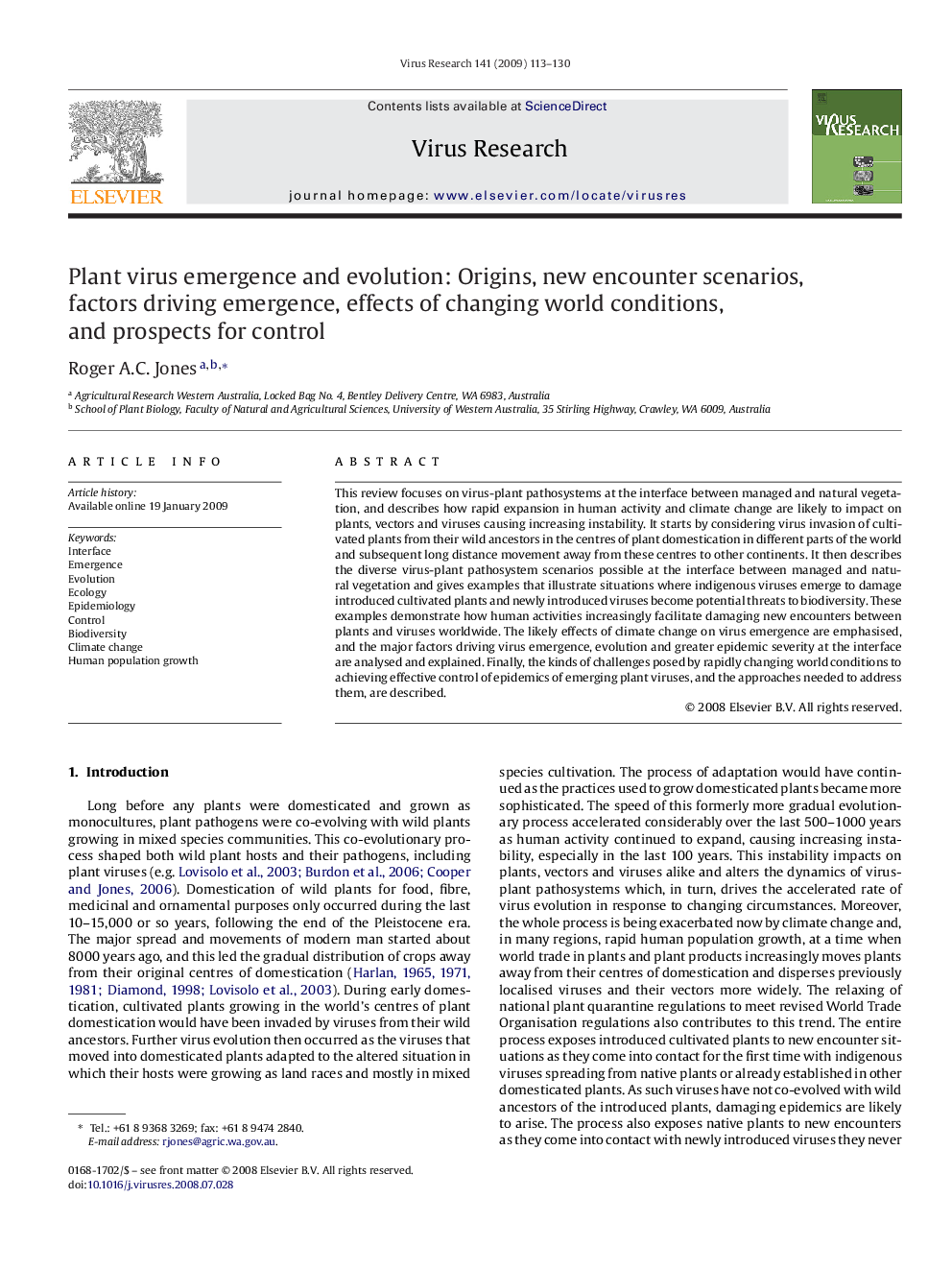| Article ID | Journal | Published Year | Pages | File Type |
|---|---|---|---|---|
| 3430185 | Virus Research | 2009 | 18 Pages |
This review focuses on virus-plant pathosystems at the interface between managed and natural vegetation, and describes how rapid expansion in human activity and climate change are likely to impact on plants, vectors and viruses causing increasing instability. It starts by considering virus invasion of cultivated plants from their wild ancestors in the centres of plant domestication in different parts of the world and subsequent long distance movement away from these centres to other continents. It then describes the diverse virus-plant pathosystem scenarios possible at the interface between managed and natural vegetation and gives examples that illustrate situations where indigenous viruses emerge to damage introduced cultivated plants and newly introduced viruses become potential threats to biodiversity. These examples demonstrate how human activities increasingly facilitate damaging new encounters between plants and viruses worldwide. The likely effects of climate change on virus emergence are emphasised, and the major factors driving virus emergence, evolution and greater epidemic severity at the interface are analysed and explained. Finally, the kinds of challenges posed by rapidly changing world conditions to achieving effective control of epidemics of emerging plant viruses, and the approaches needed to address them, are described.
